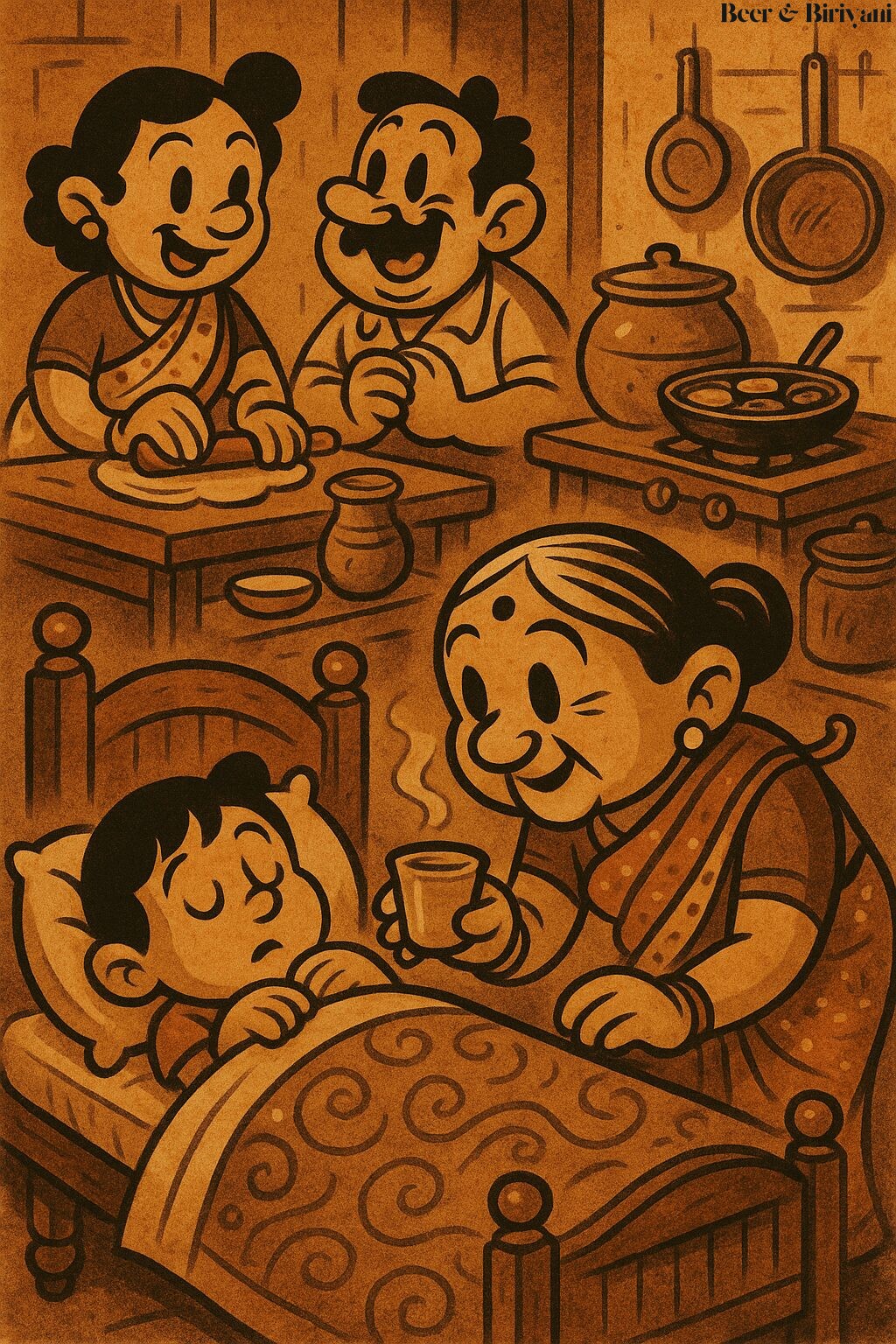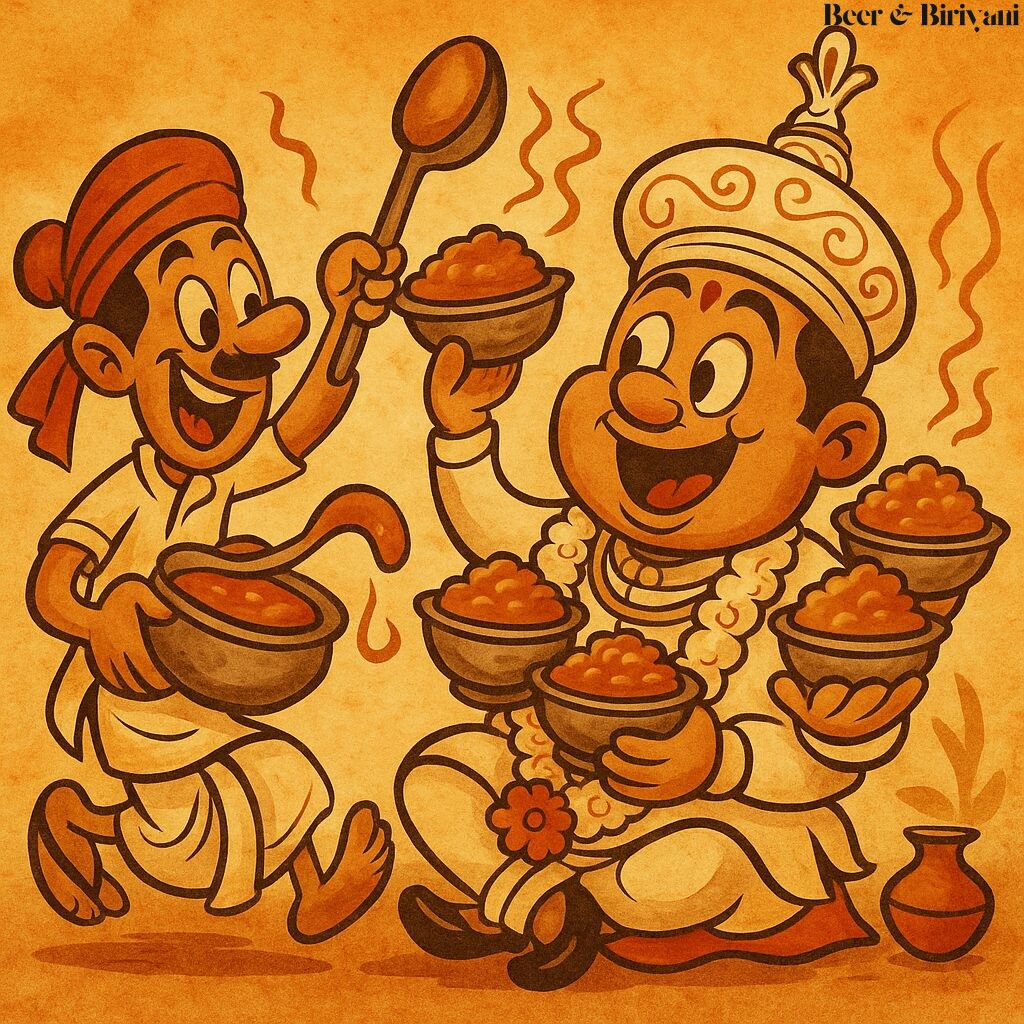Ajwain was never the spice you reached for first. Or even second. It lived in the back corner of the masala box, somewhere between the dried bay leaf that never saw action and the nutmeg that came out only once a year. But despite its quiet presence, ajwain (carom seeds, if we’re speaking internationally) held an almost mythical status in my childhood home in Mumbai. You didn’t use it often. But when you did, it meant things had gotten serious.
Like when someone had a stomachache, or that vague, all-body discomfort called gastrik. That’s when my mother would deploy her secret weapon—a warm, oily ajwain ka pani or, even worse (read: stronger), a spoon of ajwain with salt and a few drops of warm water. No frills, no fuss, just a tiny fistful of bitterness that could shut down a full-blown digestive rebellion before dinner.
The Authority Spice
Ajwain wasn’t a “flavor” spice in our house—it was a functional one. It didn’t make dishes beautiful. It didn’t perfume the kitchen like jeera or bloom in golden oil like mustard seeds. Ajwain worked in silence. It was the doctor that didn’t need an appointment, the grandmother whose “just eat this” carried more weight than a WebMD search.
Even the smell of ajwain is medicinal. Sharp, thyme-like, intense. It opens your sinuses before it even reaches your stomach. If haldi is warm and earthy, and hing is funky and theatrical, then ajwain is stern. Like an Ayurvedic headmaster. No-nonsense, no negotiation.
When It Appears, It Means Something
The first time I noticed ajwain in everyday food was in ajwain parathas. My aunt made them on days when the family’s collective digestion was “off” (translation: post-wedding buffet regrets). The dough smelled like a spice cupboard in exile. The flavor? A slow burn. Not spicy, but assertive. You chewed more slowly. You respected the meal. You didn’t ask for pickle on the side because this wasn’t a hedonistic paratha. This was a therapeutic paratha. You felt better by the third bite—possibly because of the ajwain, possibly because the food came with intention.
The Unsung Hero of Deep Frying
Ask any home cook who’s fried pakoras or mathri in bulk during Diwali—they’ll tell you ajwain isn’t optional. It’s insurance. A pinch of crushed ajwain in the batter ensures the snack doesn’t turn on you later. It balances indulgence. It lets you eat six more pieces than you should, with slightly less guilt and a significantly better morning.
That’s the thing about ajwain—it doesn’t just belong to food. It belongs to the post-meal moment too. The one where you’re lying on the couch, hand on belly, contemplating the universe. If you have ajwain in your kitchen, that moment ends faster. It’s the friend who tells you, “Yes, you overdid it, but let’s fix it.”
Ancestral Approval Built-In
Ajwain carries an aura of ancestral approval. My grandmother kept hers in an old film canister, labeled in fading Marathi. She didn’t use it every day, but she’d toss a pinch into hot ghee when someone had a cold or add it to hot water after festivals overloaded with shrikhand and puran poli. The seeds never made a scene. But they were there, doing the work, keeping balance.
Even Ayurvedic texts have long praised ajwain’s digestive powers. Its oils are antimicrobial, antispasmodic, and famously bitter—because bitterness, as every Indian elder knows, is not to be avoided. It’s to be respected.
Ajwain in Austin
Now in my kitchen in Austin, ajwain has a glass jar all to itself. I don’t reach for it every week. But when I make ajwain rice after a long trip or add it to a pot of kadha when flu season rolls around, I know I’m not just cooking—I’m invoking. Memory. Ritual. Science. Spice. Ajwain reminds me that Indian food isn’t just delicious—it’s medicinal, mathematical, and quietly profound.
So no, ajwain won’t win spice of the year. It won’t be trending on food blogs or showing up in turmeric lattes. But in every Indian household, it’s already been famous for centuries. It doesn’t need applause. It just needs a small space in the spice box—and the knowledge that when the time comes, it’ll quietly, confidently do its job.
Born in Mumbai, now stir-frying feelings in Texas. Writes about food, memory, and the messy magic in between — mostly to stay hungry, sometimes just to stay sane.












